Can Hamsters See in the Dark?
Hamsters cannot see clearly in the dark. Their vision is naturally poor both day and night, so they depend on smell, whiskers, and hearing to explore their surroundings. Understanding how hamsters see helps owners create a safe and comfortable environment.
Hamsters are adored pets due to their small size and charming looks. They are known for being active at night and require particular care to flourish in their environment.
One common question that hamster owners regularly ask is “can hamsters see in the dark”. This guide will explain hamster vision in simple terms and clarify the confusion related to it.
Hamster Vision
Hamsters are crepuscular, meaning they are most active during dusk and dawn. Their eyesight is limited — they see best only a few inches ahead and cannot perceive sharp details. While their pupils adjust in dim light, they are not well equipped for total darkness. They do not have the same visual clarity as people, but their eyes are well-suited for low-light situations.
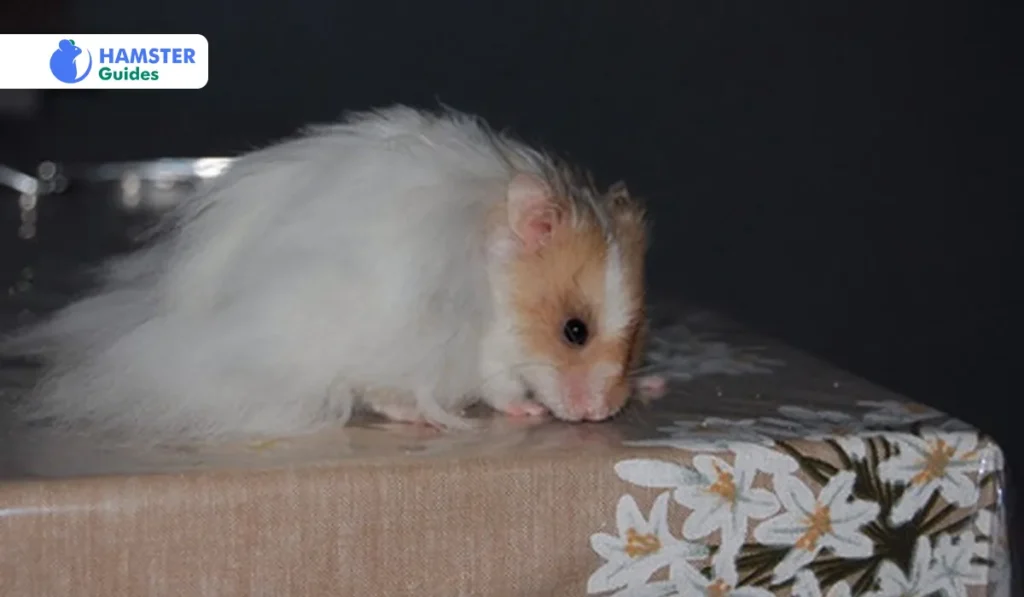
Hamsters have bigger pupils that widen in darkness, permitting more light to enter their eyes. This adjustment makes a difference when they see objects and explore their environment in low-lit situations.
Hamsters have poor eyesight but can manage in dim light using other senses.
However, it’s a misunderstanding that people might think hamsters don’t see well at night because their vision is clearer during the day.
According to Hepper, hamsters are nearsighted and their vision is limited — which is why they use other senses to navigate safely.
Comparison of Hamster and Human Vision
| Aspect | Hamsters | Humans |
| Visual Acuity | Not as sharp as humans | Sharper than hamsters |
| Color Vision | Limited; essentially color-blind | Full-color vision |
| Pupil Size | Pupils enlarge in low-light conditions | Pupils adjust to varying light levels |
| Tapetum Presence | Present; enhances vision in darkness | Absent |
| Depth Perception | Reduced | Better due to binocular vision |
Extra Knowledge: Hamsters are easily affected by changes in temperature. To ensure hamsters remain comfortable, maintain the room temperature at a constant between 68-76°F (20-24°C) where their cage is situated.
Myth 1:
Hamsters are blind or not blind during the day. Although their eyesight is poorer than that of other animals, or humans. However, they depend upon their other different senses, like listening and smell, during the day to navigate and discover food. They’re sensitive to bright light and may prefer low light to move during the daytime.
Related Resource: How Long Can Hamsters Go Without Water?
Myth 2:
Hamsters can see or not see in black and white. Although, they have poor color vision. However, they are capable of recognizing the various shades of blue and green. However, they may have difficulty distinguishing between red and green colors.
Hamster Eye Structure
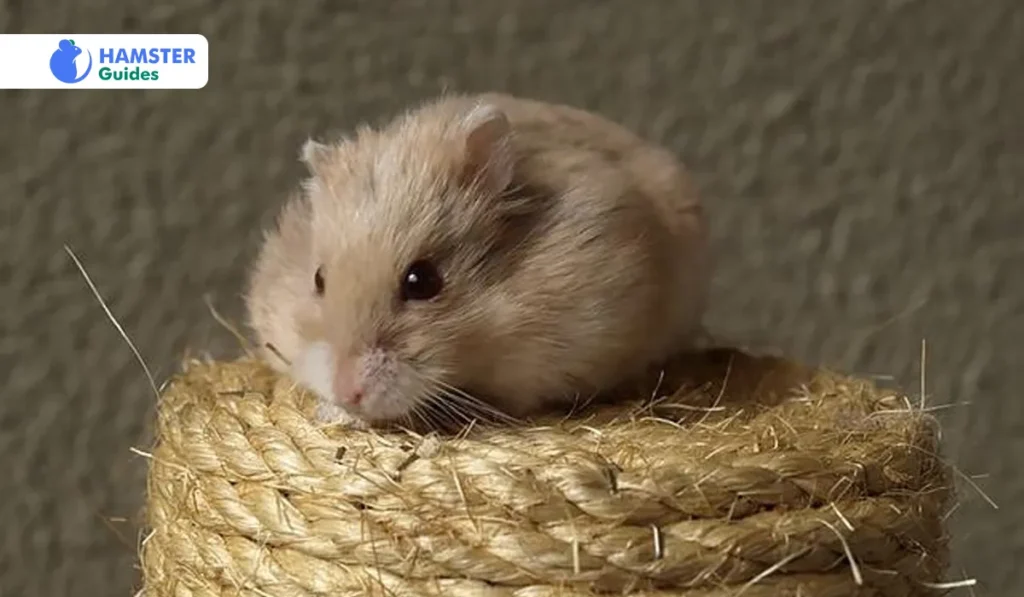
A common misconception is that hamsters have “excellent night vision.” In reality, their eyesight is blurry and color-limited. They are not blind, but they do not see clearly in either daylight or darkness. Instead, they rely heavily on their sense of smell and whiskers to map their environment.
Extra information: Unexpected loud noises can disturb your hamster. Maintain a calm environment to minimize disruptions during their sleep time.
Limitations of Hamster Vision
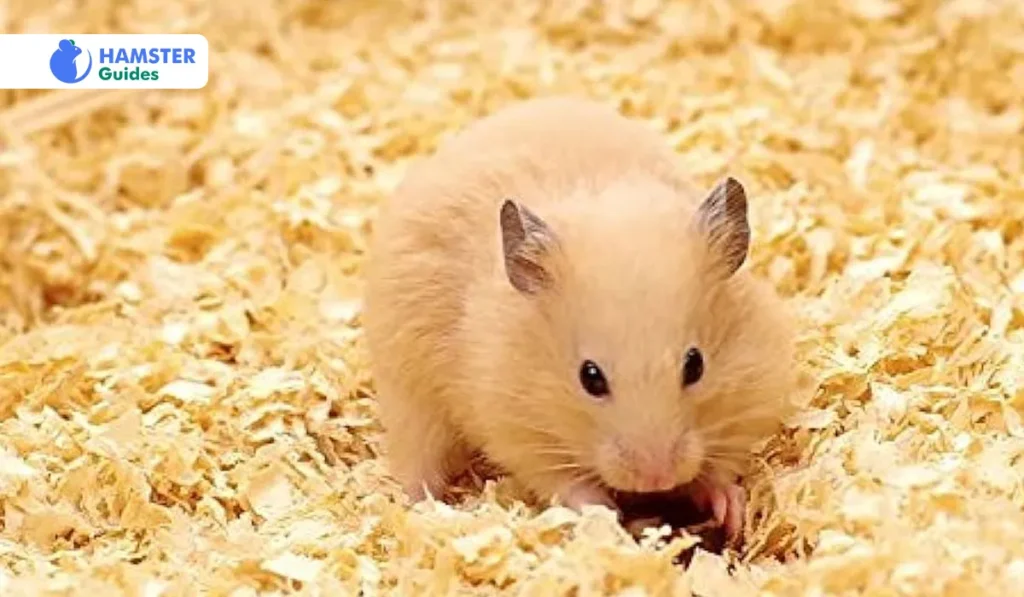
Despite having adaptations for seeing in the dark, hamsters’ vision has limitations. They have poorer visual acuity and deep perception than humans, especially in low light. Moreover, they have restricted color vision. That makes hamsters particularly colour-blind and they cannot differentiate between different colors.
Related Resource: Can Dwarf Hamsters Eat Apples?
Hamster Vision Characteristics
| Aspect | Hamster Vision |
| Visual Acuity | Mostly color-blind with a grayscale perception |
| Color Vision | Because side-set eyes have limited depth perception |
| Pupil Size | Bigger pupils that improved low-light vision |
| Tapetum Presence | Have tapetum lucidum to reflect light |
| Depth Perception | Because of side-set eyes have limited depth perception |
Relying on Other Senses
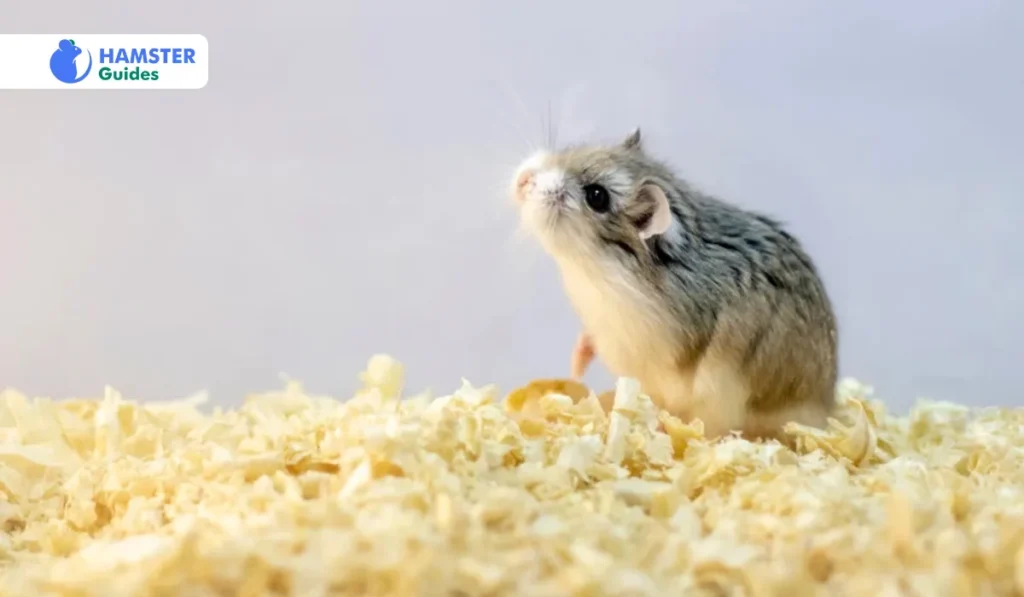
Besides their vision, hamsters depend on their sense of smell and hearing to move around, especially in the dark. Their strong sense of smell helps them find food and detect any predators. In the same way, their sharp sense of hearing enables them to recognize sounds and movements. In short:
- Smell – helps them find food and recognize surroundings.
- Whiskers – detect textures and obstacles in the dark.
- Hearing – picks up small movements and potential threats.
Related Resource: Do Hamsters Live in The Wild?
Extra information: Observe your hamster’s sleep routine. It’s better to reserve playtime and socializing for evenings or short wake-up timings throughout the day. Don’t wake them up constantly.
Adaptive Vision
Hamsters are crepuscular or nocturnal creatures by nature, which means they’re most active during dusk or at night. Their internal body clock, known as the circadian rhythm, regulates their sleep-wake cycle. This behavior evolved from their wild ancestors, who were better at staying safe from predators during dark times.

Hamsters have developed adaptive vision that allows them to function well in low-light conditions, though their eyesight is not very sharp. Their eyes contain specialized rod cells that detect movement and dim light more effectively than human eyes. This adaptation helps hamsters adjust quickly to lighting changes, making it easier for them to explore and stay safe in the dark.
Related Resource: Can Hamsters Eat Grasshoppers?
Additional knowledge: The demands of different species of hamsters may differ slightly. It’s important to research to provide the best care according to their specific breed.
Behavior in Low-Light Conditions
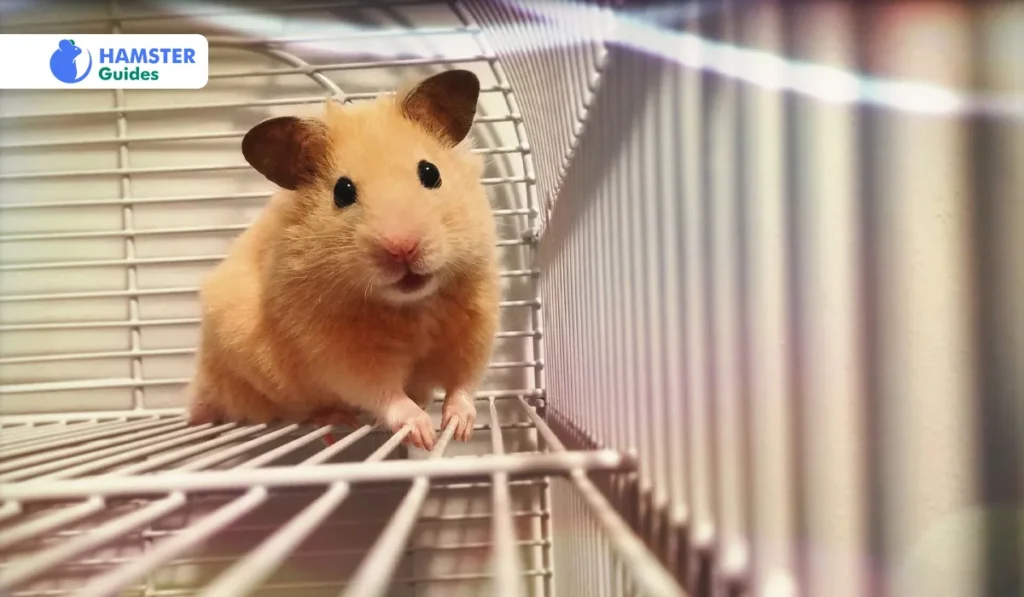
At night, hamsters become more active and engage in activities including foraging for food, exploring their surroundings, and utilizing their workout wheel. Their nocturnal lifestyle aligns with their natural instincts and preferences for low-light environments. It is essential for pet owners to pay attention to their behavior at night and provide a suitable environment that fulfills their needs.
Related Resource: Can Hamsters Eat Dried Banana?
Nocturnal Behaviors of Hamsters
| Behaviour | Description |
| Foraging for Food | To preserve their health and discharge stored energy use exercise wheels at night |
| Exploration | Busy to explore their habitat, search new areas, and navigate in darkness |
| Exercise | to remain hygienic and clean often remains busy with grooming activities |
| Social Interaction | depends on species, some Interact with other cage mates or spend time alone |
| Grooming | to remain hygienic and clean often remains busy in grooming activities |
Masters of the Dark: Seeing in the Dim
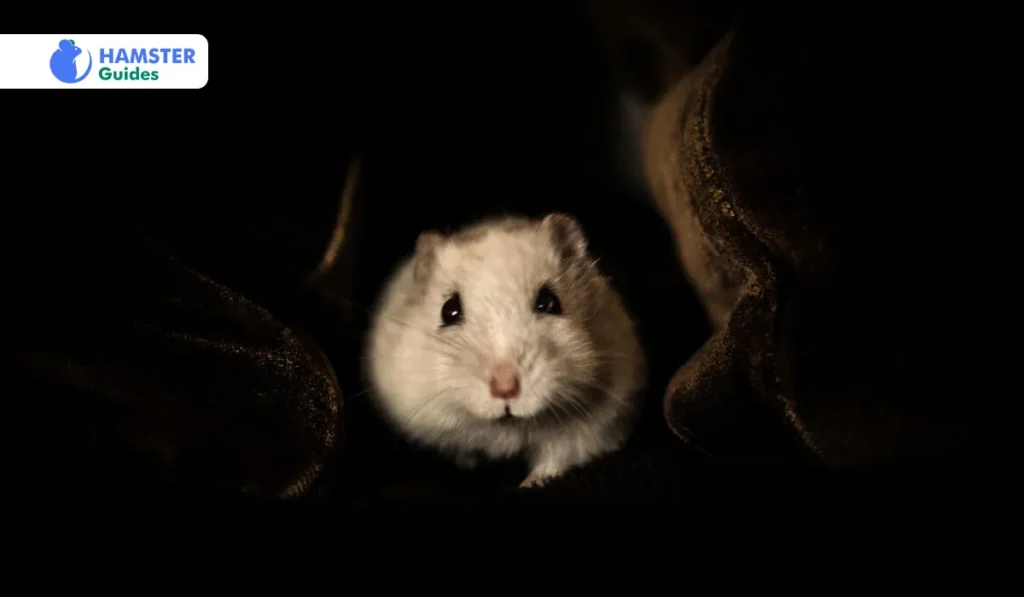
While hamsters cannot see in total darkness like owls, they have exceptional night vision. Their big eyes are uniquely suited to detect low light, letting them move around their burrows and seek food at night. For their nighttime activities, they are also dependent on non-visual senses such as smell and touch.
Impact of Lighting Changes on Hamsters
Hamsters prefer a dark or gloomy habitat. Unexpected changes in brightness can cause discomfort. Adding bright lights or sudden fluctuations in brightness might interrupt their sleep and make them anxious. For their comfort, It is critical to create a constant lighting ambiance.
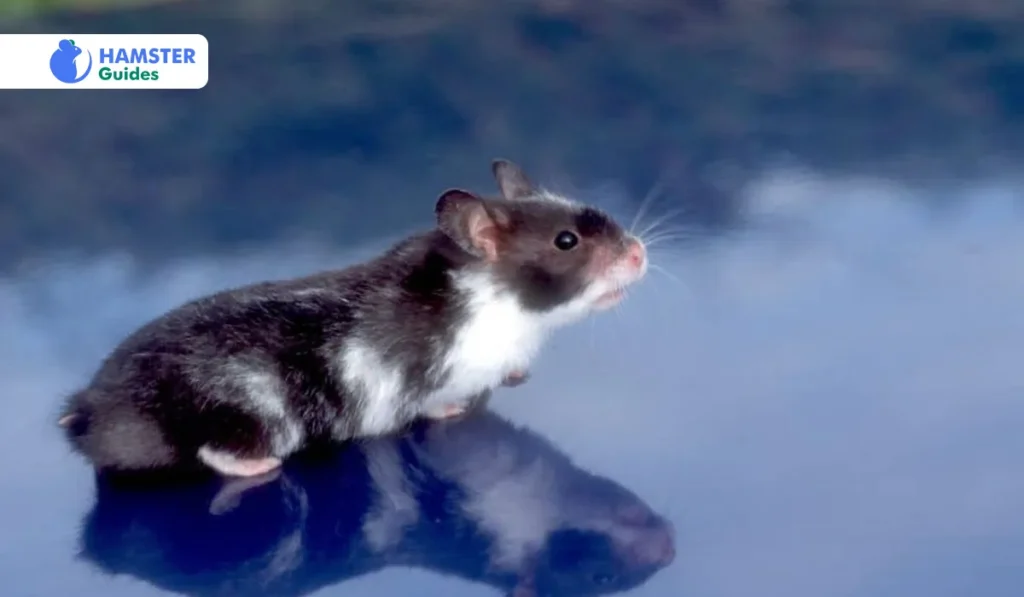
Hamsters are also sensitive to temperature, noise, and other environmental changes. However, to keep them happy and healthy, provide them with appropriate cages and adjust the surroundings to their needs.
Related Resource: How To Take Care Of A Hamster?
Care Tips for Owners
Hamsters prefer dim or shaded environments. Avoid exposing them to bright light, as it can cause stress. Instead, provide a stable lighting routine, with natural day-night cycles. Always ensure their cage is safe and obstacle-free, since their poor eyesight makes them prone to falls.
Impact of Light on Hamster Behavior
| Light Condition | Behaviour |
| Low-Light/Dark Environment | Improved exploration, activity and foraging, |
| Bright Light | minimize activity, escape to safe areas |
| Artificial Lighting | Disturbance of normal circadian rhythm, anxiety |
| Gradual Light Changes | response to environmental changes, change in behavior |
Additional information: Hamsters do not require strong light during their sleeping times. if necessary use a low nightlight. Try to avoid strong overhead lighting.
The Final Words
So, can hamsters see in the dark? Not clearly — but they don’t need to. Their other senses make them excellent at navigating low-light conditions. As an owner, supporting their natural instincts with proper lighting and safe housing is the best way to keep them happy. Even though their vision is not good during the day, they still use their other senses to fulfill their needs. It’s your duty as being hamster’s owner to create a setting that suits their visual requirements. Stays away from dramatic lighting adjustments. You have to be aware of the hamster’s vision to guarantee the health and happiness of your pet.









Leave a Reply